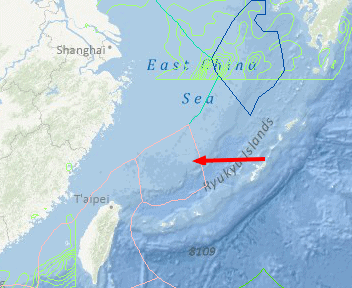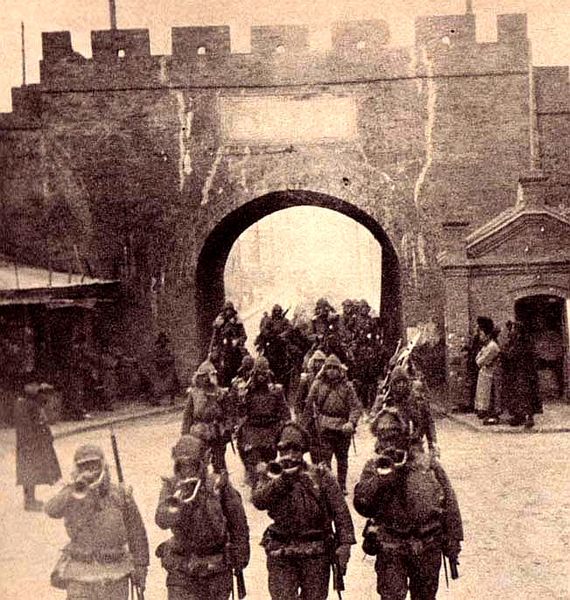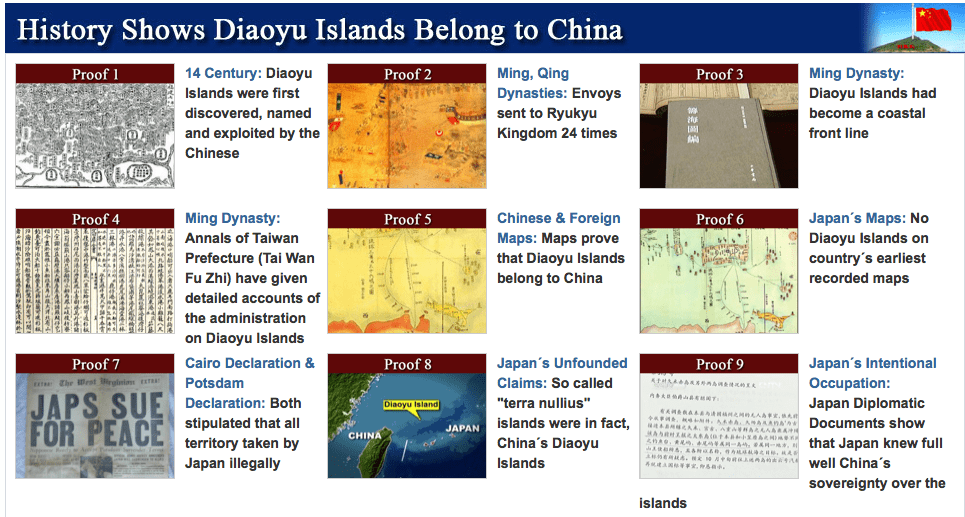The War in Ukraine as a Perfect Storm
The war in Ukraine triggers a global whirlwind involving energy and food crisis. The latter is quite singular, because it combines the consequences of the war on the global agricultural system with massive extreme weather events, such as the U.S. midwestern megadrought.
War as global disruption
Indeed, since the start of the Russian offensive in Ukraine, the war added to the economic sanctions imposed by the EU, the U.S. and the G7 on Russia. The sanctions and the war have had disrupting effects on the Ukrainian and Russian exports of cereals, essentially wheat, maize and barley. (FAO – Information Note on The Importance of Ukraine and the Russian Federation for Global Agricultural Markets and the Risks Associated with the Current Conflict – 25 March 2022 Update).
From sanctions to un-sanctions
From the beginning to the end of march, the sanctions regime targeted, among others, financial services and agricultural exports, making it harder for Russia to export its agricultural products on the international markets (Maxim Suchkov, “Repercussions of Russian sanctions, from agriculture to microchips”, Russia Matters, 10 March 2022). This had immediate effects on the prices, bcause of a worldwide demand that was already high and supply quite tight (Patti Domm, “A fertilizer shortage, worsened by war in Ukraine, is driving up global food prices and scarcity“, CNBC, April 6, 2022).
- Trump Geopolitics – 1: Trump as the AI Power President
- Uranium for the U.S. Nuclear Renaissance – 2: Towards a global geopolitical race
- The New Space Race (1) – The BRICS and Space Mining
- Uranium for the U.S. Nuclear Renaissance – 1: Meeting Unprecedented Requirements
- Fifth Year of Advanced Training in Early Warning Systems & Indicators – ESFSI of Tunisia
- Towards a U.S. Nuclear Renaissance?
- AI at War (3) – Hyperwar in the Middle east
However, on the 24 March, Washington eased some of the sanctions on Russian agricultural products, notably on fertilizers (“USA eases sanctions on agricultural products, including fertilizers”, The Investologist, 31 March 2022).
On the Ukrainian side, the damages on the transport system, and the blocking of the Black Sea and the Sea of Azov ports, among them Mariupol and its harbour, drastically diminish the Ukrainian export capability. The Ukrainian authorities try to compensate by redirecting the grains exports through railways.
However, the quantities that can be moved by rail are much lower. In the same time, the transport time and costs are higher. (Silvia Aloisi and Pavel Polityuk, “Ukraine could lose $6 billions in Grain exports with ports blocked”, Reuters, March 21, 2022 and “Ukraine’s grain exports held up while railways struggle to cope, analyst said”, Reuters, April 2, 2022)
Furthermore, the fact that a large part of those exports do not reach the international markets is only the most superficial part of the coming global agricultural shock.
Indeed, the main agricultural centres and crops need fertilizers. As it happens, if the U.S. and Canada are major producers of potassium potash and nitrogen fertilizers, Russia, Belarus and Ukraine are major exporters.
If the U.S administration eased the export ban on 24 March 2022, the Russian political authorities decided first to reduce their exports, before easing those measures at the start of April (Shelby Myers, Veronica Nigh, “Too Many to Count – Factors Driving Fertilizers Prices higher and Higher”, Market Intel, December 13, 2021 and Dipanjan Roy Chaudhury, “Russia increases export quotas of fertilizers easing supply to India“, The Economic Times, 20 April 2022).
These export swings have reduced the amount of fertiliser available in the world in March, i.e. at the same time as the crops are planted, thus increasing demand and prices (Charlotte Hebebrand and David Laborde, “High fertilizers prices contribute to rising global food security concerns“, International Food Policy Institute, April 25, 2022).
Furthermore, it gets worse, because of the combination of these factors with the massive impact of climate change on major agricultural areas, such as the U.S. Midwest. Indeed, the “mega drought” that impacts that American region as well as its Southwest is in itself a major factor of agricultural crisis.
In other words, the war in Ukraine is literally “chaining” different factors of agricultural crisis, from cereal production through exports to climate change”. As it happens, the war in Ukraine turns this chain of factors and variables into a gigantic systemic global agricultural crisis.
We shall see how this systemic crisis is becoming its own driver, each factor driving the others. We shall also look at the way the agricultural crisis “meets” the global energy crisis. Finally, we shall see how this systemic crisis becomes the “continuation of the war in Ukraine by other means”.
The war in Ukraine and the agri-exports crisis
The war in Ukraine is triggering a worldwide and systemic agricultural crisis. Since the start of Russia’s invasion on 24 February 2022, the war and the international sanctions block the usual exports of Ukrainian and Russian cereal crops (FAO, ibid).
The missing Ukrainian and Russian exports
As it happens, in 2019, these exports represented 23 % of the global wheat exports, 19% of barley, 18% of maize, and 64% of sunflower oil, an essential cooking ingredient globally (Hannah Ritchie, “How could the war in Ukraine impact global food supplies?”, Our World in Data, 24 March 2022). The agricultural prices were already on the rise before the start of the war. Now, the blocking of the Ukrainian and Russian exports is driving powerful inflation on these commodities.
The prices war
For example, on 13 April 2022, the price of the wheat bushel was at a historical high of $11.13. One must remember that, year on year, that price was $6.29 on 13 April 2021. On 1 February 2022, it was $7,5. On 22 February 2022 and, on the eve of the war, it was $8.4. Hence, in 48 days, the price of wheat skyrocketed to $11.13 (“40 Year Historical Chart”, Macrotrends, April 13 2022).
So the increase rate for wheat prices almost doubled from one month to the other since the start of the war and the disruption of the Russian and Ukrainian export.
Furthermore, as we shall see now, this agricultural crisis is not only quantitative. It also takes a systemic dimension
Meet the US megadrought
Megadrought in Continental U.S.
The current megadrought affecting the American Midwest and SouthWest is becoming another driver of this systemic agricultural crisis. NOAA’s U.S. Drought Outlook establishes that more than 60% of the continental U.S. experiences minor to exceptional drought conditions (NOAA, “Spring Outlook: Drought to Expand in Warmer conditions, flood risk for Upper Midwest, Midwest, South East”, 17 March 202).
It must also be noted that there is a high risk of above than normal temperature during the coming spring and summer, which will combine with the 2022 La Nina. This means that, in the main U.S. agricultural regions, soils are going to be too dry, while water is and will be particularly expensive for farmers.
It also means that vegetation growth is going to slow down, while the risks of diminishing crop will be important (Karl Plume, “Plains drought to curb U.S wheat harvest, adding to global supplies worries, Reuters, 14 March 2022).
The War and the fertilizers
This risk is heightened by the pressure exerted by the war in Ukraine on the production, exports and prices of fertilizers, because of the blocking of the Belarus and Russian fertilizers exports in March, that triggered global prices hikes in March and April. For example, Belarus produces 16,5% and Russia produces 16,1% of the potassium potash global supply (Shelby Myers, Veronica Nigh, “Too Many to Count – Factors Driving Fertilizers Prices higher and Higher”, Market Intel, and Charlotte Hebebrand and David Laborde, “High fertilizers prices contribute to rising global food security concerns“, International Food Policy Institute, April 25, 2022 ).
Even more importantly, Russia represents 16,1% of the global exports of nitrogen. Belarus represents 18,5% of the global potassium potash exports, while Russia’s share is 16,5%. Following the sanctions in February and March, as well as the Russian export restrictions during the same period, the shortage of their fertilizers production has impacted agricultural giants such as the U.S., India, Egypt, China, while triggering a violent price hike (“America’s largest Farm Cooperative Warns Sanctions May Spark Fertilizers Shortages”, ZeroHedge, 07 April, 2022).
Combination
This overall situation is worsened by the harsh 2021-2022 U.S. winter season. The polar vortex and harsh winds episode that hammered the “wheat belt” was so violent that the winds swept away some of the rich top soils that ensure the success of crops (Karl Plume, ibid). As it happens, those episodes also signal the dryness of soils.
Those different extreme weather events, such as the intensity of the megadrought and of the polar vortex, also signal the worsening of climate change and combine themselves with the economic consequences of the war in Ukraine (Jean-Michel Valantin, “What are Climate Wars ?”, The Red Team Analysis Society, 2 November 2021).
The war-U.S. megadrought nexus also drives a global geopolitical risk, because of the lasting global food prices crisis it may trigger.
Towards the great destabilization?
Wheat prices and revolution
One must keep in mind that wheat prices have a social and political crucial importance. This is especially true in countries where bread is the basic staple of the population. It defines the ability of families and individuals to feed themselves, or not. It is the case, for example, of the Arab countries .
In this context, it is important to remember that the 2011 “Arab springs” were preceded by serious wheat and bread price hikes. Those were triggered by two to three years of extreme weather events combined with financial speculation (Werrell and Femia, The Arab Spring and Climate Change, 2013).
Indeed, on 10 January 2011, when bread riots started in Tunisia, the price of wheat was $7.73. The riots spread to Egypt, Lebanon, Syria. They became the trigger for massive political opposition movements to the regimes in power. Nowadays, the current price hikes are higher and climb more quickly (“40 Year Historical Chart”, Macrotrends, April 13, 2022).
The War in Ukraine and oil prices
The problem is that this agricultural products prices inflation happens while energy prices also rise. The “post” Covid economic recovery drives a rapid growth in oil and gas demand, thus driving energy prices higher.
As it happens, the war in Ukraine triggers an overheating of oil prices. The prices err between $96 and $120 since the start of the war. (Scott Patterson and Sam Goldfarb, “Why are gasoline prices so high? Ukraine-Russia War Sparks Increases Across the U.S“, Wall Street Journal, 1 April, 2022).
So, the energy-agricultural prices are taking societies into a “pincer movement” that puts under pressure entire societies. This “pincer” amplifies dynamics of political polarization in numerous and major countries.
Indeed, the basic function of a state and its rulers is to protect their nations and people. If they fail, their legitimacy, power and authority decrease and the level of domestic violence rise (Norbert Elias, The Civilizing process, vol.II, State Formation and Civilization, 1982).
Food Riots
That is precisely what happened at the start of the Arab Springs and that appears to be starting again. For example, since March 2022, riots and protests have taken place in Iran and Iraq. Riots also took place in Pakistan, Sri Lanka and Peru, against the prices of bread and energy. (Bamo Nouri, “Iraq food protests against spiralling prices echo early stages of Arab Spring”, 16 March 2022, Kayhan-London, “Protests in Iran risk spreading as Ukraine war triggers global food crisis”, Worldcrunch, April 11 2022, Julia Horowitz, “From Pakistan to Peru, Soaring food and fuel prices are tipping countries over the edge”, CNN Business, April 9, 2022 )
In Egypt, food prices are soaring as the government seeks to replace wheat imports from Ukraine and Russia. At the beginning of March, Egypt had only four months of stocks of wheat (Michael Tanchum, “The Russia-Ukraine War has turned Egypt’s food crisis into an existential threat to the economy”, Middle East Institute-MEI@75, March 3, 2022).
Furthermore, the current situation is also pitting nations against one another in order to access agricultural goods, fertilizers and food. Indeed, in order to weather the global agricultural-energy-food crisis, China is hoarding 51% of the world wheat reserves.
It is also hoarding all other sorts of cereals, while the Chinese winter wheat crop is dramatically bad. This China’s food security policy puts India, the other giant consumer of wheat, under pressure, as well as the rest of the world. (Andrew Whitelaw, “Big Wheat Trouble in Big China”, Thomas Elder Market, 14 March 2022)
The Time Issue
A major hurdle is the duration of this crisis. The longer it will last, the more the domestic and international tensions will grow. The problem is that the war in Ukraine may last beyond the next plantation and harvest cycle.
In the meantime, there is a very strong probability that extreme weather events are going to keep on hammering agricultural regions all around the world (“How will La Nina impact 2022 agricultural production?”, Feed and Grain, Feb 17, 2022).
For example, since the beginning of March 2022, India (1,3 billion people strong) and Pakistan (207,7 millions people strong) are going through the worst and longest heatwave in a century. On 30 April, temperatures reached 49 °C in Jacobabad in Pakistan, getting very close to the limits of human biological tolerance. This heatwave is already causing massive damages to the wheat harvest that could be 20% lower than in 2021 (Manavi Kapur, “India’s extreme heatwave is already thwarting Modi’s plan to “feed the world”“, Quartz, 28 April 2022).
Symmetrically, the raging war in Ukraine may have dramatic effects on the 2022 crops in this country. Those result, for example, from the mobilization of some farmers to fight against the Russian troops. They also result from the degradation of numerous fields by the battles, and from the destruction of farms and of numerous roads and bridges.
To add insult to injury, the Ukrainian farmers also suffer from the fuels and fertilizers prices rise triggered in March and April (Tyler Durden, “Shocking estimates shows Ukraine crop harvest could be halved”, ZeroHedge, April 10, 2022).
This chronic and drastic mitigation of the Ukraine and Russian agricultural exports is also going to combine with the coming effects of the 2022 La Nina. This cyclic weather phenomenon, amplified by climate change, may degrade the Brazilian and Argentinian crops through floods and drought (John Barany, DTN Meteorologist, “South American corns, soybeans: La Nina continues to affect crops”, AgFax, February 11, 2022).
Hunger Wars on the Horizon?
Hence, numerous governments may face a physical impossibility to feed their populations. Those situations are most likely to unleash severe unrest as well as important migrations. Those, in turn, will be politically polarizing in attractor countries. We may even wonder if this is not already the case in Europe or in the United States.
It becomes perfectly possible that we may have to face large scale international food competition, if not hunger wars, in the near future. Those will oppose societies with access to food to those with less capabilities.
Featured image: Photo military journalist Taras Gren, 12 September 2015, Anti-terrorist operation in eastern Ukraine (War Ukraine)- Ministry of Defense of Ukraine – CC BY-SA 2.0




















